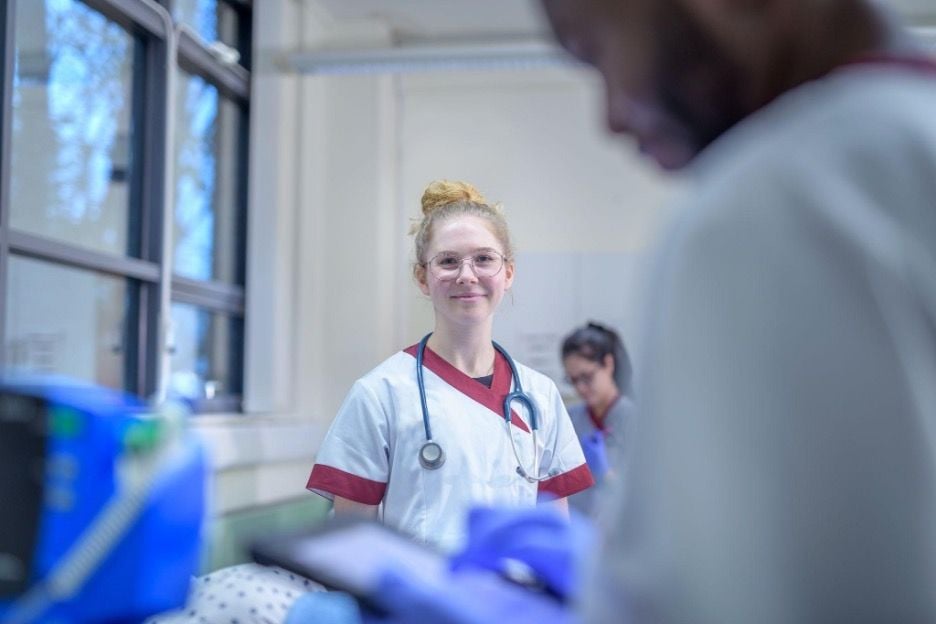
The World Economic Forum speculates the world could be short 13 million nurses by 2030. There are various reasons for this, with exhaustion, burnout and mistreatment ranking the top three. The COVID-19 pandemic also played a role in this figure, with an estimated 115,000 deaths in the worldwide workforce of healthcare workers. To bring these numbers back up to where they need to be, the education sector needs to get involved in showcasing ways they plan to incentivise and support new nurses.
Educational Opportunities
Tertiary training providers are aiming to support the training and development of upcoming nurses to combat this concerning number. Educational providers must have highly effective training programmes and quality control to ensure their graduates are fully trained and prepared to work in such a highly demanding industry. Whether it's accelerated programmes, undergraduate degrees or postgraduate degrees in nursing, the new generation of nurses needs to have the skills and experience required to meet modern medical challenges and help close the nursing shortage gap.
Government Incentives
In 2022, the Andrews Government in Australia backed the healthcare system by supporting free university and specialist training for thousands of nurses to recruit 17,000+ new nurses. This means that more than 10,000 students will have the cost of their nursing undergraduate studies paid for and scholarships made available, along with thousands more who progress further and specialise. This showcases that Australia is determined to get the nursing crisis under control, with domestic students enrolling in 2023 and 2024 receiving scholarships up to $16,500 to be paid while studying and after entering the public health service for two years.
Similarly, the United States now offersFinancial incentive Programs, which include scholarships and loan repayment or forgiveness in exchange for a commitment from graduates to work in the nursing sector. Other regions, such as Africa, introducedOccupation-specific dispensation (OSD), a financial strategy to attract and retain health professionals in the public sector. The international responses are wide and varying, but it is clear that many countries are now implementing different incentives to attract people to the nursing sector. This can include a variety of educational strategies and financial incentives with the same goal: encouraging more new graduates and prospective students to consider a career in nursing.

The Reasons Behind Shortages
Nursing can be looked at in three generations throughout the world. The first is baby boomers, who are starting to retire in ever-increasing numbers. This generation was hardworking and essentially got the job done with no fuss.
Generation X trained in similar fashions to the boomers but are not so loyal to any one profession and are more willing to shift directions if something more lucrative comes along. Lastly, come the millennials, who various studies have shown to have even lower employment loyalty, with changing jobs every five years being a common practice or even shifting careers entirely.
Millennials value coaching, mentoring and personalised feedback more than any previous generation in the workplace, along with education programmes and opportunities for self-development with the utmost importance.
It is said that workplaces should expect a much higher turnover as the demands of the average worker increase and younger generations show more willingness to leave a position if their expectations are not met.
Education and Self-Development Opportunities
Technology is advancing rapidly and is slowly being implemented at more training institutes endeavouring to make education incorporate a wider student body, and enabling everybody to upskill or reskill themselves.Educating the Nurse of the Future: Report of the Independent Review of Nursing Education explains how online education has become universal and can be blended as needed by the course requirements with face-to-face learning. Online courses allow students residing in rural areas the chance to study when they previously may not have done so.
New technology has also supported the possibility of lectures being held via platforms such as Zoom and Microsoft Teams with the ability for a student to watch a recording if they miss a lecture due to other commitments. Live demonstrations can also be streamed, and trainers can have one-on-one sessions or group sessions with students at any time, meaning students can enrol from anywhere in the world and still participate. There is also easy access to cloud storage for course materials, classroom videos and recorded lessons, allowing return access at any time to review and watch as needed.
Finally, social media, especially chat functions such as those utilised in Microsoft Teams, allows students to communicate electronically instantly to share their thoughts, work, and requests for assistance. This allows them to gain a network of their peers before even finishing the course.

Future Advancements
In today's world, technological advances will continue pushing the boundaries and making furtherinnovations in education possible and provide even more opportunities for students to enhance their learning. Artificial intelligence (AI) is one such technology that is already starting to see an increase in usage on websites such asChatGPT andGrammarly to support editing and correcting students' work. Continued advances in AI are likely to increase further opportunities for students to utilise. Likewise, virtual reality technology is poised to unlock new possibilities for immersive virtual or remote learning. Potentially, students will be able to interact with their surroundings in a three-dimensional environment from the comfort of their own home. This will allow nursing students to potentially complete required studies remotely, especially if they are rurally based.
Further Training in the Workplace
It is not completely the role of educational providers to incentivise new nurses. Once a nurse gains employment, especially in a hospital setting, the goal is ongoing learning to ensure a highly developed and continually updated workforce.St. Vincents Hospital in Australia offers competency training throughout your career, including advanced life support, catheterisation and venepuncture. All these things are undertaken during working hours along with the offer of study days for healthcare professionals where the person can either complete a course through their internal offerings or head off to an approved educational provider to complete their studies.
It is clear the world is in a nursing crisis. In 2020, there were 27.9 million nurses worldwide, but this number is still 13 million short of the number required to sufficiently meet the global demand for healthcare providers. Educational opportunity is the best option for onboarding new nurses, and with each country offering a variety of educational and government incentives, it is worth looking into the option of nursing as your career or career change if you are a millennial looking for a career where everything you do benefits somebody else daily.
This article is part of the HealthManagement.org Point-of-View Programme.























